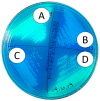Antimicrobial s-PBC Coatings for Innovative Multifunctional Water Filters
- PMID: 33171674
- PMCID: PMC7664665
- DOI: 10.3390/molecules25215196
Antimicrobial s-PBC Coatings for Innovative Multifunctional Water Filters
Abstract
Biological contamination is a typical issue in water treatment. Highly concentrated microbial suspensions in a water flow may cause filter occlusion and biofilm formation, affecting the lifespan and quality of water purification systems and increasing the risk of nosocomial infections. In order to contrast the biofilm formation, most of the conventional strategies rely on the water chemical modification and/or on the use of filters functional coatings. The former is unsafe for huge chemicals spilling required; therefore, we focus on the second approach and we propose the use of a sulfonated pentablock copolymer (s-PBC, commercially named Nexar™) as innovative multifunctional coating for improving the performance of commercial water filters. S-PBC-coated polypropylene (PP) samples were tested against the pathogen Pseudomonas aeruginosa. The covering of PP with s-PBC results in a more hydrophilic, acid, and negatively charged surface. These properties avoid the adhesion and proliferation attempts of planktonic bacteria, i.e., the biofilm formation. Inhibition tests were performed on the as-modified filters and an evident antibacterial activity was observed. The results point out the possibility of using NexarTM as coating layer for filters with antifouling properties and a simultaneous ability to remove bacteria and cationic dyes from water.
Keywords: Pseudomonas aeruginosa; antibacterial coating; biofilm; filter; polypropylene; s-PBC; sulfonated polymers.
Conflict of interest statement
The authors declare no conflict of interest.
Figures









References
-
- Beiras R. Biological Tools for Monitoring. Mar. Pollut. 2018:65–291. doi: 10.1016/b978-0-12-813736-9.00016-7. - DOI
-
- Petralia S., Sciuto E.L., Messina M., Scandurra A., Mirabella S., Priolo F., Conoci S. Miniaturized and Multi-Purpose Electrochemical Sensing Device based on thin Ni Oxides. Sens. Actuators B Chem. 2018;263:10–19. doi: 10.1016/j.snb.2018.02.114. - DOI
-
- Amjad Z., editor. Reverse Osmosis: Membrane Technology, Water Chemistry, and Industrial Applications. Van Nostrand Reinhold; New York, NY, USA: 1993.
-
- D’Angelo D., Filice S., Libertino S., Kosma V., Nicotera I., Privitera V., Scalese S. Photocatalytic properties of Nafion membranes containing graphene oxide/titania nanocomposites; Proceedings of the 2014 IEEE 9th Nanotechnology Materials and Devices Conference (NMDC); Aci Castello, Italy. 12–15 October 2014.
MeSH terms
Substances
LinkOut - more resources
Full Text Sources
Miscellaneous

